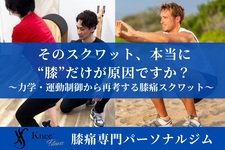
姿勢コントロ-ルというのは、視覚、体性感覚、前庭覚などを統合する事でなりたっています。
ですが、感覚器には加齢による低下があるとされています1-3)!
加齢による前庭機能低下に関しては、前庭動眼反射(Vestibular-ocular Reflex ; VOR)の低下など多く報告されています4-6)。
前庭って言われてもなかなか分からないですよね。
これが、前庭です。この輪っかみたいなものが半規管でなかには有毛細胞というのがあって、平行感覚などをつかさどっています。
VOR低下の原因として、半規管や耳石器の有毛細胞や前庭神経核の前庭ニューロン数減少があり7-10)、有毛細胞は40歳代から約3%低下があり11)、高齢者は若年者と比較して約12-40%減少します10)。そして有毛細胞の減少により頭部回転運動を検出する能力が低下するんです6)。
これは、高齢者にとっておおきな問題です。例えばスーパーに買い物に行くときです。
歩きながら横の商品を見ながら歩きますよね。人とお話しながら歩くとき、周囲の景色を見ながら歩くときも横を見ながら歩くはずです。
非常に簡単にまとめると、前庭機能(VORなど)が低下すると、頭の位置の感覚と視線が合わないというような感じでしょうか。
高齢者の前庭機能と転倒は関連しています。
皆さんも、筋力低下や疼痛だけでは説明がつかないような身体の動揺がある高齢者をみた事があるのではないでしょうか?
転倒経験者の約60-80%に前庭機能の異常があったとの報告もあります14-16)。
歩行の様な繰り返す行動では前庭機能低下による凝視能力低下が、先行眼球運動など異常をきたす17)ので、視界がぶれるんでしょうかね。
さらに前庭機能は、頭部の方向付けに必要である為、空間知覚機能としても重要で、前庭機能低下により頭部回旋運動やターン時等の移動能力低下が起こります18-20)。
イギリスのYardleyさんら21)は前庭機能低下患者に対して前庭リハビリテーション(前庭リハ)を行うとVOR適応が得られるとしています.
VOR適応のメカニズムとしては、眼球運動が適正でなく視野の異常が生じた時に登上線維が興奮し、小脳での平行線維・プルキンエ細胞間による抑圧が起こる事でVOR適応へ寄与する事が示唆されています22).
前庭疾患以外にもパーキンソン病24)や頭部外傷患者23)において効果があるとされており、 明らかな前庭機能異常の無い高齢者を対象とした前庭リハにおいても姿勢安定化に効果があることが報告されています25.26).
若年健常者に対しても眼球運動を中心にした前庭リハにより、頭頸部回旋時の重心動揺が減少します27).
この研究27)では、Gaze Stability exerciseというトレーニングをしています.
カードを見ながら頭頸部を動かすような運動です.これだけでもめまいがしそうですね。
文献27から引用
前庭リハビリはGaze Stability exerciseだけではなく、目を閉じて歩行するや、わざと回転するようなう運動をしたりというような運動もあります。
前庭リハは、眩暈の有無や年齢に関係なく姿勢安定性や転倒リスクを減少させる効果が期待できるんです。
これだけ前庭機能が歩行に重要なので理学療法士は前庭機能について詳しく勉強する必要がありますよね。
引用文献
1) Moschner C, et al: Age-related changes in visual tracking. Jgerontol 49:1994 M235-238.
2) Shaffer SW, et al: Aging of the somatosensory system: a translational perspective. Phys Rher81: 2004.193-207,
3) Baloh RW, et al: A longitudinal study of gait and bakance dysfunction in normal older people. Arch Neurol 60. 2003.835-839
4) Baloh RW, Jacobson KM, Socotch TM et al: The effect of aging on visual-vestibuloocular responses. Exp Brain Res, 95(3):1993 509-516.
5) Paige GD, et al: Senescence of human visual-vestibular interactions. 1. Vestibulo-ocular reflex and adaptive plasticity with aging. J Vestib Res, 1992.2(2): 133-151
6) Peterka RJ, Black FO, Schoenhoff MB et al: Age-related changes in human vestibulo-ocular reflexes: sinusoidal rotation and caloric tests. J Vestib Res, 1999.1(1): 49-59,
7) Tang Y, et al: Age-related change of the neuralnumber in the human medial vestibular nucleus: a stereological investigation. J vestib Res 11:357-363,2001-2002
8) Iwasaki S, Smulders YE, Burgess AM et al. Ocular vestibular evoked myogenic potentials to bone conducted vibration of the midline forehead at Fz in healthy subjects. Clin Neurophysiol, 119(9): 2135-2147
9) Lopez I, Ishiyama G, Tang Y et al. Regional estimates of hair cells and supporting cells in the human crista ampullaris J Neurosci Res.2005 82:421–31.
10) Taylor RR, Jagger DJ et al. Characterizing human vestibular sensory epithelia for experimental studies: new hair bundles on old tissue and implications for therapeutic interventions in ageing. Neurobiol Aging .2015 36:2068–84.
11) Matheson AJ, Darlington CL et al. Dizziness in the elderly and age-related degeneration of the vestibular system. NZ J Psychol 1999 28:10–6.
12) Lopez I, Honrubia V et al: Aging and the human vestibular nucleus. J Vestib Res 1997 7:77–85.
13) Agrawal Y, Davalos-Bichara M et al: Head impulse test abnormalities and influence on gait speed and falls in older individuals. Otol Neurotol, 2013 34:1729–35.
14) Ekvall Hansson E1, Dahlberg LE et al: Vestibular Rehabilitation Affects Vestibular Asymmetry among Patients with Fall-Related Wrist Fractures - A Randomized Controlled Trial. Gerontology. 2015;61(4):310-8
15) Liston MB, Bamiou DE et al: Peripheral vestibular dysfunction is prevalent in older adults experiencing multiple non-syncopal falls versus age-matched non-fallers: a pilot study. Age Ageing.2014 43:38–43
16) Pothula VB, et al: Falls and vestibular impairment. Clin otolaryngol Allied Sci29.2004:179-182.
17) Schneider R, Walker MF: Amplitude and frequency prediction in the translational vestibulo-ocular reflex. J Vestib Res .2014, 24:357–64
18) Honaker JA, Shepard NT. Age effect on the gaze stabilization test. J Vestib Res .2010 20(5):357–62.
19) Yoder RM, Taube JS. The vestibular contribution to the head direction signal and navigation. Front Integr Neurosci .2014, 8:1–13.
20) Jandl NM, Sprenger A et al: Dissociable cerebellar activity during spatial navigation and visual memory in bilateral vestibular failure. Neuroscience.2015, 305:257–67.
21) Yardley L1, Beech S, Zander L ,at al: A randomized controlled trial of exercise therapy for dizziness and vertigo in primary care. Br J Gen Pract. 1998;48(429):1136-40
22) Hirano T. Involvement of the Cerebellar Synaptic Plasticity in Adaptation of the Vestibulo-Ocular Reflex and Optokinetic Response. Equilibrium Res 2011,70,104-109
23) Gurley JM1, Hujsak BD et al. Vestibular rehabilitation following mild traumatic brain injury. NeuroRehabilitation. 2013;32(3):519-28.
24) Rossi-Izquierdo M1, Soto-Varela A et al: Vestibular rehabilitation with computerised dynamic posturography in patients with Parkinson's disease: improving balance impairment. Disabil Rehabil. 2009;31(23):1907-16.
25) Hall CD, Heusel-Gillig L at al: Efficacy of gaze stability exercises in older adults with dizziness. J Neurol Phys Ther. 2010; ;34(2):64-9
26) Marioni G1, Fermo S et al: Vestibular rehabilitation in elderly patients with central vestibular dysfunction: a prospective, randomized pilot study. Age (Dordr). 2013 ;35(6):2315-27
27) Morimoto H1, Asai Y, et al: Effect of oculo-motor and gaze stability exercises on postural stability and dynamic visual acuity in healthy young adults. Gait Posture. 2011;33(4):600-3.

























